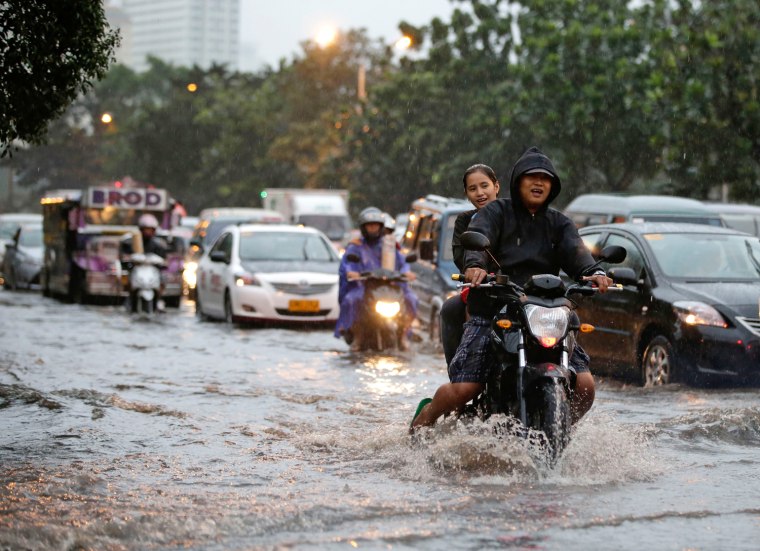If global warming gases build up so much that record-setting rains, droughts and coastal floods routinely bankrupt businesses and cities, the world's economic and political powers may decide to aggressively re-engineer the global climate. One option is to fill the atmosphere with enough sunlight-reflecting particles to restore surface temperatures to pre-industrial levels. If they do, would all be cool?
Absolutely not, according to a new study that asked the question to 12 models forced to simulate the global climate with four times more carbon dioxide in the atmosphere than existed in 1850, the start of the industrial revolution. Under such conditions, reflecting sunlight in order to lower temperatures to pre-industrial levels would cause monsoonal rains to drop 5 to 7 percent below pre-industrial levels.
Most previous modeling studies designed to ask a similar question about geoengineering have returned a similar answer: Blocking sunlight in a bid to cool a planet wrapped in a blanket of heat-trapping gases can have the undesired consequence of a reduction in monsoonal rains that much of the world relies on to grow food. "But other (models) said, 'We're not quite sure,'" Simone Tilmes, a climate scientist at the National Center for Atmospheric Research in Boulder, Colo., told NBC News.
So, she and a team of 26 other scientists from around the world went in search of the best answer available from a suite of climate models well-suited for this kind of inquiry. "We find that indeed the models consistently show a reduction of the precipitation with geoengineering," Tilmes said. "When you apply geoengineering in addition to greenhouse gases you do not go back to the conditions before, but actually go below that and reduce precipitation," she said.
The findings were published online this week in the Journal of Geophysical Research: Atmospheres.
Crazy proposition
A problem with this study is that it models a geoengineering policy — rapidly cooling the planet to pre-industrial temperatures — "that would be a disaster. It would mean sudden cooling; it would mean crop losses; this big drying. It would be crazy," David Keith, a climate scientist at Harvard University in Cambridge, Mass., told NBC News. "So of course nobody is actually suggesting that."
A more sane approach, in Keith's estimation, is a level of intentional sunlight blocking that "cuts the rate of warming roughly in half," he said. "In that scenario, you are still letting precip go up a bit."
Keith explained that when the amount of sunlight reaching Earth's surface is reduced in an otherwise greenhouse-gas-rich world, rainfall slackens faster than temperature drops. In this scenario, to keep rainfall at a desirable level for drinking, showers and agriculture, temperatures need to remain above pre-industrial levels. He outlines his arguments in a new book, "The Case for Geoengineering."
Tilmes agrees that the scale of geoengineering she and colleagues modeled is unadvisable. They chose the scenario to better "understand the process" of the climate's response to sunlight blocking.
"Sometimes, if you do not push the system so hard, you do get a signal, but it is less obvious because there is large variability in the climate system in the patterns of rains," she explained. "And so in order to get out a significant result, you have to push it quite hard."
The result they got, however, is not new, stressed Keith. "There is no question that you could have scenarios that you make precip go down," he said. "It is just that we probably wouldn't choose those scenarios."
Path forward
According to Tilmes, a novelty in the study is its emphasis on the role of plants in suppressing rainfall over land. In an atmosphere saturated with carbon dioxide, plant pores that absorb carbon dioxide shrink and, in turn, release less water vapor to the atmosphere, "which then makes it drier," she explained. More input from plant biologists is required to better understand this response.
More research like this, she added, is urgently needed to improve the climate models so that scientists can better "understand the side effects, the benefits or the non-benefits" of geoengineering. Keith, too, calls for more research, just of a kind that models "the things that people are actually suggesting."
John Roach is a contributing writer for NBC News. To learn more about him, visit his website.
